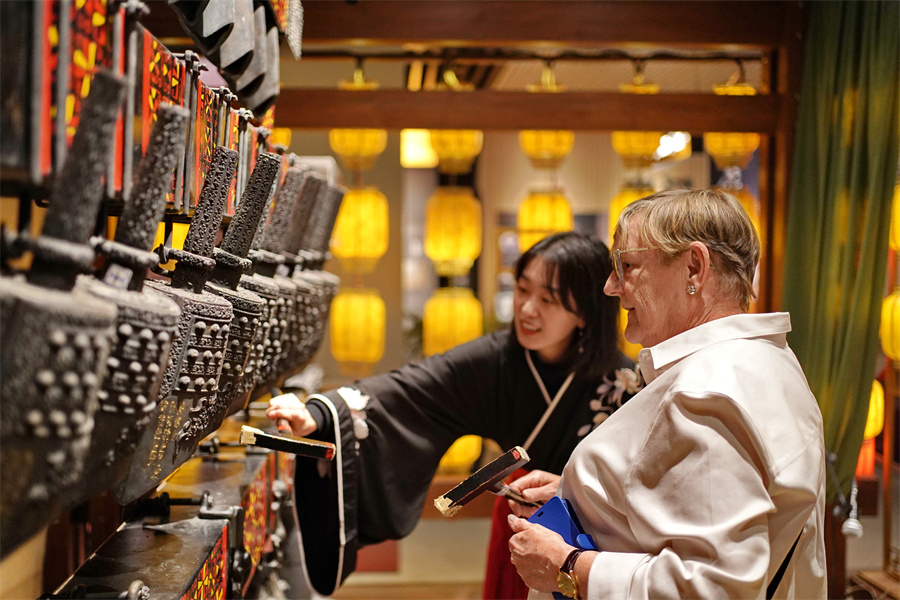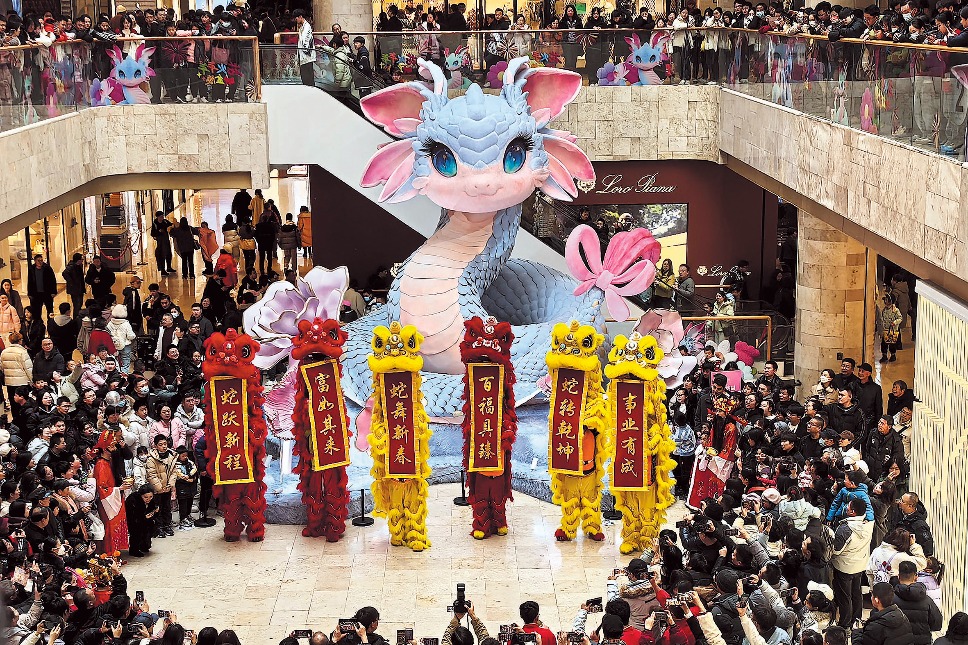Holiday inbound tourism thrives
Smaller cities attract global visitors with culture, cuisine


China's inbound tourism market saw strong recovery and growth during the just-concluded May Day holiday, with smaller cities attracting more foreign visitors seeking cultural experiences, according to industry insiders.
During the five-day break, inbound travel bookings surged 130 percent from a year earlier, said Trip.com Group, China's largest online travel agency. While top-tier cities such as Beijing and Shanghai remained popular, destinations including Chengdu in Sichuan province, Chongqing, Hangzhou in Zhejiang province, Zhuhai in Guangdong province, and Xi'an in Shaanxi province also made the list of top inbound choices.
China has been opening its doors wider to international travelers. In 2024, the country expanded its unilateral visa-free policy to include 38 countries, allowing visits of up to 30 days, according to the National Immigration Administration.
Favorable tax refund policies have also boosted inbound travel. In late April, China lowered the tax refund threshold from 500 yuan ($68.80) to 200 yuan and raised the cash refund limit from 10,000 yuan to 20,000 yuan. There is no limit on refunds processed by bank transfer, according to a guideline issued by the Ministry of Commerce and five other departments.
"We encourage relevant institutions to provide tax refund services through various means such as mobile payments, bank cards and cash, and to better meet the diverse payment service needs of overseas travelers," said Sheng Qiuping, vice-minister of commerce, at a recent news conference in Beijing.
During the holiday, tourists from the United States, South Korea and Japan made up the largest share of inbound visitors. The number of travelers from Australia, Vietnam and Canada also rose significantly, according to Beijing-based travel platform Qunar.
Foreign visitors are venturing beyond major cities. Hotel bookings by foreign tourists in Zhuhai rose 70 percent year-on-year, while Qingdao in Shandong province and Wuhan in Hubei province saw increases of 60 percent and 50 percent, respectively, Qunar reported.
China's picturesque landscapes and rich culinary culture have frequently been featured in South Korean TV dramas and variety shows, piquing travel interest. The May Day holiday also coincides with a public holiday in South Korea, encouraging young travelers to visit China.
South Korea's leading travel agency, Hana Tour, said January trips to China rose 77 percent year-on-year, outpacing a 20 percent increase for trips to Japan. The surge was mainly driven by China's visa-free policy.
Major South Korean airlines have responded by expanding their international flight offerings to China to meet rising demand.
Meanwhile, more foreign visitors are seeking immersive cultural experiences in rural areas. A Trip.com resort in Zhangjiajie, Hunan province, reported a surge in bookings from tourists from the US, Italy and Spain since April.
"Besides sightseeing, foreign tourists have shown increasing interest in in-depth tours and diverse experiences, such as participating in farming activities and attending ethnic concerts," said Fang Zexi, a Trip.com Group researcher.
Their cultural curiosity extends into everyday life. In Chengdu, a popular southwestern city, more foreign visitors are booking culinary experiences, visits to local farmers' markets, cooking sessions, table presentations and food tasting, Trip.com said.
In the first three days of the holiday, more than 5,700 inbound passenger trips were recorded by Chengdu's border inspection authority, a year-on-year increase of over 170 percent, according to the Sichuan provincial entry and exit bureau.




































